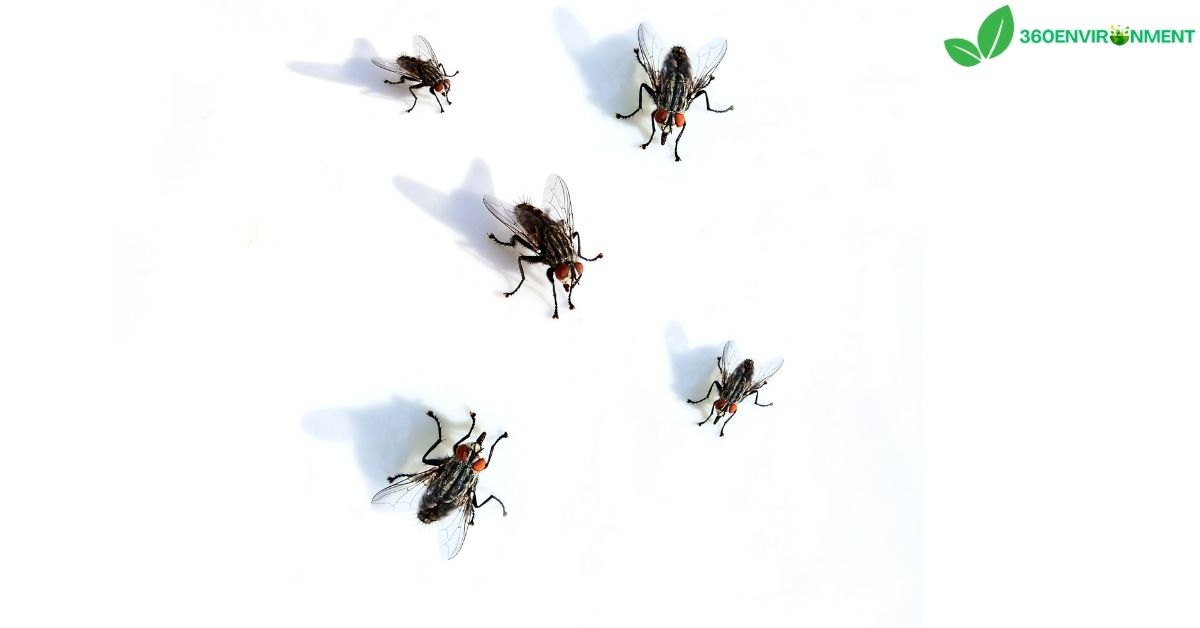Flies are often seen as nuisance insects, buzzing around homes, businesses, and outdoor areas. Despite their small size, they play a significant role in ecosystems, but their presence can be unpleasant for humans, especially when they congregate around food or waste. To better manage flies, it’s essential to understand what attracts them in the first place. The question, what are flies attracted to, is one that not only informs pest control strategies but also provides insight into the ecological significance of flies.
In this article, we will explore the various factors that attract flies, from food sources to environmental conditions, and examine how these behaviors impact both natural ecosystems and human spaces. By understanding what flies are drawn to, we can appreciate their role in the environment while also learning how to better manage their presence.
1. The Biology of Flies: Why Are They So Persistent?
Before diving into what are flies attracted to, it’s important to understand the biology of flies and why they seem to be everywhere. Flies belong to the order Diptera, which includes over 150,000 species, ranging from common house flies to fruit flies and horseflies. These insects are incredibly adaptive and able to thrive in a variety of environments and conditions.
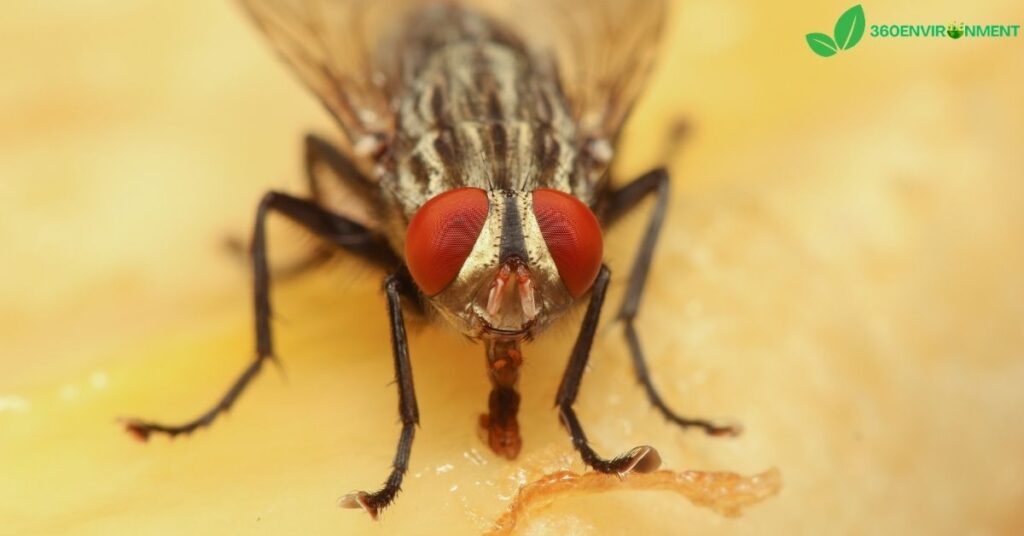
1.1. Life Cycle of a Fly
Flies have a relatively short life cycle, typically lasting from several days to a few weeks, depending on the species and environmental conditions. The life cycle of a fly consists of four stages:
- Egg: Flies lay their eggs in warm, moist environments, often on decaying organic matter, feces, or food.
- Larva (Maggot): The eggs hatch into larvae, commonly known as maggots, which feed on decaying material for several days.
- Pupa: After growing to a certain size, the larvae pupate, entering a resting stage where they transform into adult flies.
- Adult: Adult flies emerge from the pupal stage, ready to feed, mate, and lay eggs, completing the cycle.
The rapid reproduction and adaptability of flies make them highly successful at exploiting food sources and environments, particularly those altered by human activity.
1.2. Sensory Adaptations of Flies
Flies are equipped with powerful sensory organs that help them locate food, detect danger, and find mates. Understanding these sensory adaptations is crucial to answering what are flies attracted to:
- Olfactory Senses (Smell): Flies have an exceptional sense of smell, which they use to detect food from great distances. Their antennae and sensory hairs can pick up on volatile organic compounds (VOCs) emitted by food, decaying matter, and even chemicals.
- Vision: Flies have compound eyes, which give them a wide field of vision. They are particularly attracted to movement, bright colors, and reflective surfaces, which can signal potential food or breeding sites.
- Taste: Flies taste using receptors on their feet, which allows them to quickly assess whether a surface is suitable for feeding.
2. What Are Flies Attracted To? Key Factors
Now that we’ve explored the biology of flies, let’s delve into the specific factors that answer the question of what are flies attracted to. Flies are primarily drawn to food sources and environments that provide optimal conditions for feeding, mating, and reproduction. These attractions can be broken down into several key categories:
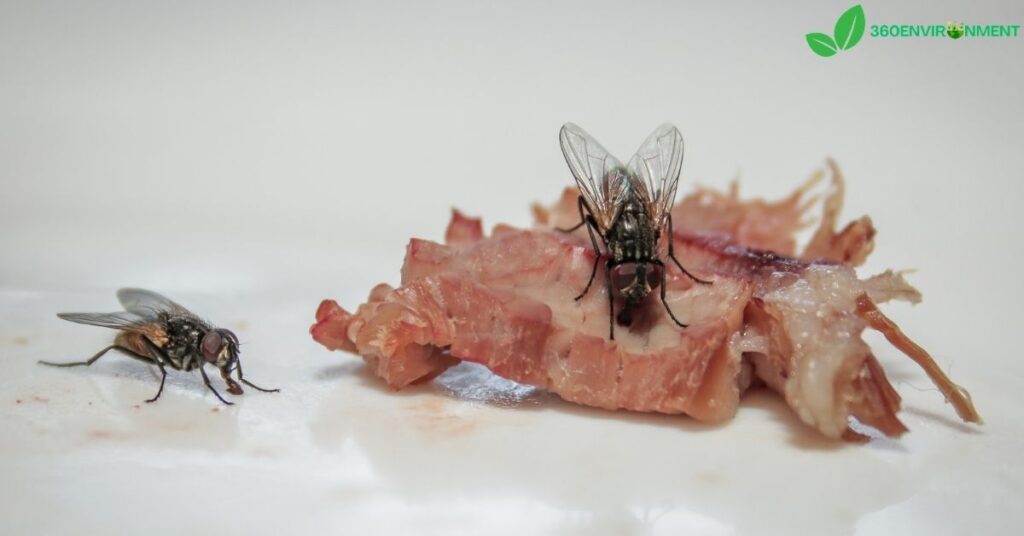
2.1. Food Sources
One of the primary reasons flies enter human spaces is their attraction to food. Their strong olfactory senses enable them to detect various food sources from long distances. The following types of food commonly attract flies:
2.1.1. Sugary Substances
Flies are highly attracted to sugary substances, which provide them with a quick source of energy. Fruit flies, in particular, are drawn to overripe fruit, fermenting beverages, and sugary liquids like soda and juice. This is because these substances emit ethanol, a byproduct of fermentation, which flies can detect with their powerful sense of smell.
Common sugary attractants for flies include:
- Overripe or rotting fruit
- Sugary beverages like soda, juice, or beer
- Sweets and pastries left uncovered
2.1.2. Decaying Organic Matter
Flies are also attracted to decaying organic matter, as it provide a suitable environment for laying eggs and feeding larvae. House flies and blowflies are particularly drawn to rotting food, animal carcasses, and manure. The decomposition process releases VOCs, which are irresistible to flies.
Examples of decaying organic matter that attracts flies include:
- Food scraps and garbage
- Compost piles
- Dead animals or animal remains
- Manure and feces
2.1.3. Protein-Rich Foods
In addition to sugary foods, flies are attracted to protein-rich substances. Protein is essential for the development of fly larvae, which is why adult flies seek out meat, dairy, and other protein sources to lay their eggs. Flies, especially blowflies, are often found around rotting meat and fish, where they deposit their eggs.
Sources of protein that attract flies include:
- Meat and seafood, especially when left uncovered
- Dairy products like cheese and milk
- Animal byproducts or pet food
2.2. Moisture and Warmth
Flies are not only attracted to food but also to environments that provide optimal conditions for reproduction. Moisture and warmth are two key environmental factors that attract flies, as they offer ideal breeding grounds for laying eggs.
2.2.1. Standing Water
Many species of flies, such as mosquitoes and gnats, are attracted to standing water. This is where they lay their eggs, as their larvae require water to develop. House flies may also be drawn to moist environments, as they prefer to lay their eggs in warm, damp areas.
Examples of standing water sources that attract flies include:
- Puddles and ponds
- Birdbaths or water fountains
- Clogged drains or gutters
- Wet garbage or compost bins
2.2.2. Warm Temperatures
Flies thrive in warm environments, which accelerate their reproductive cycles. In warm, humid climates, flies reproduce rapidly, leading to large infestations if not managed properly. This is why flies are more common during the warmer months of the year or in regions with consistently high temperatures.
2.3. Strong Odors
Flies are also attracted to certain strong odors, particularly those emitted by decaying organic matter, food, and even some plants. Their powerful sense of smell allows them to detect these odors from afar, making them a persistent presence in areas where such smells are prevalent.
2.3.1. Rotting and Fermenting Odors
As mentioned earlier, flies are highly attracted to the odors of rotting food, decaying plant material, and animal carcasses. These odors signal a potential breeding site and food source for adult flies and their larvae.
2.3.2. Human Odors
Interestingly, some species of flies, such as biting flies and mosquitoes, are attracted to human odors. Body heat, sweat, and the carbon dioxide we exhale all serve as signals to flies that a human host is nearby. This is especially true for flies that feed on blood, such as mosquitoes and horseflies.
3. Why Are Flies Attracted to Human Spaces?
Flies are often found in homes, restaurants, and outdoor areas frequented by humans because these environments provide an abundance of food, warmth, and moisture. Understanding what are flies attracted to in human spaces helps us identify the factors that make our environments appealing to flies, as well as the steps we can take to manage their presence.

3.1. Poor Sanitation and Waste Management
One of the primary reasons flies are attracted to human spaces is poor sanitation and waste management. Flies are drawn to garbage, food waste, and decaying organic matter, all of which are often found in homes and businesses that do not properly manage their waste.
To prevent flies from congregating in these areas, it is essential to:
- Keep garbage cans tightly sealed and empty them regularly.
- Clean up food spills and crumbs immediately.
- Store food in sealed containers and refrigerate perishables.
- Regularly clean drains and garbage disposals to remove food buildup.
3.2. Open Food and Drink
Uncovered food and drink left out in homes, restaurants, or outdoor gatherings are prime attractants for flies. As mentioned earlier, flies are particularly drawn to sugary beverages and fermenting food. Open soda cans, uncovered fruit platters and food scraps are all likely to attract flies.
To reduce fly attraction, it’s important to:
- Cover food and drinks when they are not being consumed.
- Store leftovers in airtight containers or refrigerate them promptly.
- Avoid leaving sweet beverages or fruits exposed in open areas.
3.3. Moisture and Standing Water
Flies are also attracted to the moisture found in homes and outdoor areas, especially standing water. Bathrooms, kitchens, and outdoor drains that remain wet or have leaking pipes can provide an ideal environment for flies to lay their eggs.
To manage flies in moist environments, ensure that:
- Leaks are promptly repaired.
- Standing water is eliminated from sinks, tubs, and outdoor drains.
- Damp areas are dried out with fans or dehumidifiers.
4. Flies in Natural Ecosystems: Their Ecological Role
While flies are often viewed as pests in human spaces, they play an important role in natural ecosystems. Understanding what are flies attracted to in nature helps us appreciate their ecological significance, as they contribute to processes such as pollination, decomposition, and the food web.
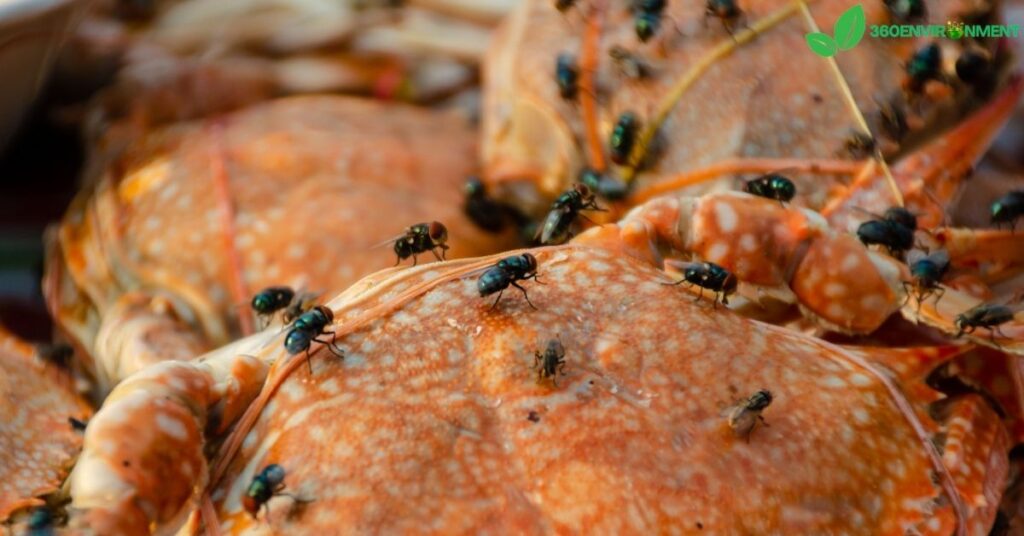
4.1. Pollination
Flies are important pollinators, particularly in environments where bees and other pollinators are less active. Some flies, such as hoverflies and bee flies, are attracted to the nectar of flowers and inadvertently pollinate plants as they feed.
Flies are especially important for the pollination of certain plants, such as:
- Carrion flowers, which emit a foul odor that mimics decaying meat to attract flies.
- Orchids and other flowering plants that rely on flies as their primary pollinators.
4.2. Decomposition
Flies play a crucial role in the decomposition of organic matter. By laying their eggs in decaying plant and animal material, flies help break down these materials into simpler substances. The larvae (maggots) feed on the decaying matter, accelerating the decomposition process and returning nutrients to the soil.
In natural ecosystems, flies are attracted to:
- Fallen fruit and plant debris.
- Dead animals or animal remains.
- Animal dung and waste.
Without flies, the decomposition process would be significantly slower, affecting nutrient cycling and ecosystem health.
4.3. Role in the Food Web
Flies are also a vital part of the food web, serving as prey for a wide range of animals, including birds, amphibians, reptiles, and other insects. Their abundance makes them a crucial food source for many species, particularly during the warmer months when flies are most active.
In natural ecosystems, flies are attracted to areas where their prey can easily access them, such as:
- Wetlands, ponds, and streams.
- Forests and meadows with abundant plant life.
- Animal grazing areas where waste provides food for fly larvae.
5. Managing Fly Populations: Sustainable Solutions
Understanding what are flies attracted to is key to managing fly populations in a way that is both effective and environmentally sustainable. Rather than relying on harmful chemicals or pesticides, many people are turning to eco-friendly solutions for fly control.
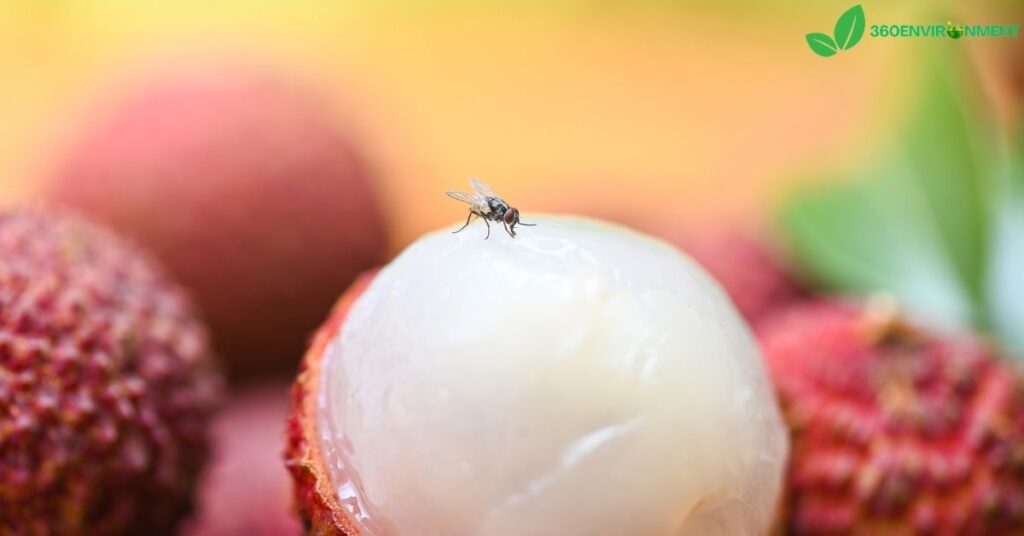
5.1. Natural Deterrents
Several natural substances can deter flies without harming the environment. These include:
- Essential Oils: Oils such as eucalyptus, lavender, and citronella have strong odors that repel flies.
- Herbs: Planting herbs like basil, mint, and rosemary around outdoor areas can help keep flies away.
- Vinegar Traps: Using apple cider vinegar traps can attract flies and reduce their presence in homes.
5.2. Biological Control
Biological control involves using natural predators or parasites to manage fly populations. For example, certain species of wasps and beetles prey on fly larvae, helping to reduce fly numbers without the need for chemical interventions.
5.3. Improved Sanitation Practices
The most effective way to manage flies is through proper sanitation and waste management. Keeping areas clean, eliminating standing water, and securely storing food can go a long way in preventing flies from becoming a problem.
Conclusion: What Are Flies Attracted To?
To answer the question what are flies attracted to, it’s clear that flies are drawn to a variety of factors, from food sources like sugary substances and decaying organic matter to environmental conditions like moisture and warmth. Their powerful sensory systems enable them to locate these attractants from great distances, making them highly persistent in both human spaces and natural ecosystems.
While flies can be a nuisance, they play an essential role in pollination, decomposition, and the food web. By understanding what attracts flies, we can take steps to manage their populations in sustainable ways while appreciating their ecological contributions.
FAQs
- What are flies attracted to?
Flies are most attracted to decaying organic matter, sugary substances, protein-rich foods, and moisture. - Why are flies attracted to garbage?
Flies are drawn to the strong odors emitted by decomposing food and organic waste in garbage, which provides an ideal environment for laying eggs. - Can flies detect food from far away?
Yes, flies have a strong sense of smell and can detect food from significant distances, especially decaying matter and sugary foods. - Why do flies gather around fruit?
Flies, especially fruit flies, are attracted to the ethanol produced by fermenting fruit, as it signals a food source and potential breeding ground. - What natural remedies can deter flies?
Essential oils, vinegar traps, and herbs like basil and mint are effective natural remedies for deterring flies. - How do flies contribute to the environment?
Flies play a crucial role in pollination, and decomposition, and serve as a food source for other animals in the food web.

